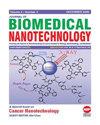根据超声剪切波技术和磁共振成像结果构建预测踝关节韧带损伤的人工神经网络模型
IF 2.9
4区 医学
Q1 Medicine
引用次数: 0
摘要
目的通过构建人工神经网络(ANN)模型,探讨急性踝关节骨折后距腓骨前韧带(ATFL)和跟韧带(CFL)损伤程度的影响因素。比较ATFL损伤、ATFL+CFL损伤和ATFL骨折患者的各种基线资料的差异,包括个人资料、人体测量资料、病史和生活史。采用logistic回归分析ATFL损伤/ATFL+CFL损伤/ATFL骨折的影响因素,采用张量流框架构建预测ATFL骨折的人工神经网络(ANN)模型。高龄(OR= 36.33, 95%CI(15.72, 60.62))、男性(OR= 21.21, 95%CI(5, 39.92))、高BMI (OR= 0.03, 95%CI(- 0.31, 0.37))、运动时间(OR= 0.48, 95%CI(- 14.66, 18.3))、糖尿病史(OR= 16.98, 95%CI(- 76.44, 480.78))均可能是ATFL及CFL损伤/ATFL破裂的影响因素。我们构建了3个神经层,第1层包含11个神经节,第2层包含7个神经节,第3层包含5个神经节,经过10次迭代,ANN模型LOSS值降至最低,并将真实值和预测值进行散点图,具有一定的线性趋势,预测效果较好。高龄、男性、高BMI、运动时间和糖尿病史可能是ATFL和CFL损伤/ATFL破裂的影响因素。应用张量流框架,构建人工神经网络预测ATFL断裂发生的算法,取得了较好的预测效果。本文章由计算机程序翻译,如有差异,请以英文原文为准。
Construction of an Artificial Neural Network Model for Predicting Ankle Ligament Injury Based on the Results of Ultrasonic Shear Wave Technology and Magnetic Resonance Imaging
We aimed to study the factors influencing the extent of anterior talofibular ligament (ATFL) and calcaneal ligament (CFL) injuries in acute ankle fractures based on construction of an Artificial Neural Network (ANN) Model. Differences in various baseline data, including personal data,
anthropometric data, disease history, and life history, were compared among patients with ATFL injury, ATFL+CFL injury, and ATFL fracture. Factors influencing the ATFL injury/ATFL+CFL injury/ATFL fracture were analyzed using logistic regression, and an artificial neural network (ANN) model
for predicting ATFL fracture was constructed using the tensor flow framework. Advanced age (OR= 36.33, 95%CI (15.72, 60.62)), male (OR = 21.21, 95%CI (5, 39.92)), high BMI (OR = 0.03, 95%CI (−0.31 0.37)), exercise duration (OR = 0.48, 95%CI (−14.66, 18.3)), and history of diabetes
(OR = 16.98, 95%CI (−76.44, 480.78)) may all be influential factors in the ATFL and CFL injury/ATFL rupture. We constructed three neural layers, the first containing 11 ganglia, the second containing 7 ganglia, and the third containing 5 ganglia, and after 10 iterations the ANN model
LOSS values were reduced to the lowest and scatter plots were made of the true and predicted values with some linear trend and better prediction. Advanced age, male, high BMI, length of exercise, and history of diabetes may be influential factors in the ATFL and CFL injuries/ATFL rupture.
Applying the tensor flow framework, the ANN algorithm was constructed to predict the occurrence of ATFL fracture with good results.
求助全文
通过发布文献求助,成功后即可免费获取论文全文。
去求助
来源期刊
CiteScore
4.30
自引率
17.20%
发文量
145
审稿时长
2.3 months
期刊介绍:
Information not localized

 求助内容:
求助内容: 应助结果提醒方式:
应助结果提醒方式:


